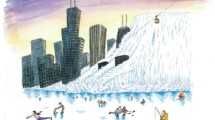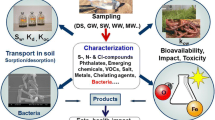Abstract
Kolkata, home of 4.5 million people, is generating 1112 million liters of sewage per day and facing the challenge of managing this wastewater. The 125 km2 wide wetland on the eastern fringe of the city, popularly known as the East Kolkata Wetlands is serving as a natural sewage treatment plant for more than a century where nearly 78 % of city sewage goes through an intricately designed canal network. This wetland is a designated RAMSAR site where the sewage treatment process is a rare example of an intertwined symbiotic relation between wastewater treatment and wetland aquaculture, where livelihood dependence of the local people on sewage-fed fisheries becomes of strategic importance in sustainable performance of the system. An aggressive urban expansion in the eastern fringe of the city is disturbing this age-old eco-balance by making this sewage water pisciculture less profitable. There is push factor due to reduced attraction of the wastewater fisheries and a pull factor due to emergence of alternative livelihood options through rapid urbanization. To protect wetland in its original form, the civil society and the administrative authorities are designing active interventions. However, these are not generating expected results as these instruments are targeting to mitigate the push factor only without paying much heed to the push–pull interactions.

Source: Dey and Banerjee (2016b)


Source: authors

Source: primary survey

Source: primary survey

Source: primary survey

Source: Dey and Banerjee (2015)
Similar content being viewed by others
Notes
The first formal record of academic experiments of wastewater treatment via wetland plants was done by Käthe Seidel at the Max Planck Institute in Plön, Germany in 1950s. In North America, Free Water Surface (FWS) Constructed Wetlands (CW) started with the ecological engineering of natural wetlands for wastewater treatment in late 1960s and beginning of the 1970s for treating all kinds of wastewater including municipal and industrial sewage (Vymazal 2010). Efforts have been made to use this wetland treated water for floriculture in Ocotlán, Jalisco, Mexico and in crop production in Italy because of their simple technology and minimal cost (Zurita et al. 2009; Morari and Giardini 2009).
IWMED was established in March, 1986 with the primary objective of carrying out studies related to wetland functions and its ecology. The institute is presently known as Institute of Environmental Studies and Wetland Management (IESWM).
Mouza is the administrative unit almost equivalent to a village. Division of EKW into 32 mouzas was reported in 2001 population census. However, with the change in population density, this number may change over time.
This core-buffer division is specified in a map prepared by the Department of Environment, Government of West Bengal in 2001 and the classification is done in terms of area coverage under water in each mouza. In the core area more than 10 % land is covered under water with a minimum coverage of 1 km2. The remaining area, surrounding the core one is called the buffer area.
Since no up-to-date reliable land record is available anywhere, a project has been commissioned under the Rajiv Gandhi Chair of the University of Calcutta in 2010 under which a land-use map has been prepared by the PAN Network by applying GIS technique. This project documented existing land use pattern and by comparing it with the previous one the major changes also have been identified.
19 mouzas in all.
August–September is the monsoon months represent peak production season for pisciculture.
Assuming USD 1 = Rs. 60.
If the cost estimate is carried out for 60 % capacity utilization then the total treatment cost would be Rs. 5410 million per year and for 90 % capacity utilization it would be Rs. 4193 million per year.
Calcutta is the erstwhile name of the city of Kolkata.
Subsequently it gained the status of an Act.
References
ADB (Asian Development Bank). (2000). Report and recommendation of the president to the board of directors on a proposed loan to India for The Calcutta Environmental Improvement Project (KEIP). RRP: IND 29466. http://www.adb.org/sites/default/files/projdocs/2000/rrp-29466-ind.pdf. Accessed 8 May 2013.
Banerjee, S. & Dey, D. (2016). Eco-system complementarities and urban encroachment: A SWOT analysis of the East Kolkata Wetlands, India, Cities and The Environment, press, Supported by Loyola Marymount University, USA (ISSN: 1932-7048) (Accepted forthcoming).
Basu, M. (2015). Waste management in fundamentals of environmental studies (pp. 323–371). Cambridge: Cambridge University Press.
Bunting, S. W. (2004). Wastewater aquaculture: Perpetuating vulnerability or opportunity to enhance poor livelihood? Aquatic Resources, Culture and Development, 1(1), 51–75.
Bunting, S. W., & Lewins, R. (2006). Urban and peri-urban aquaculture development in Bangladesh and West Bengal, India. Occasional paper 2006-2, Centre for Environment and Society, University of Essex, Colchester.
Census of India (2011). official website http://censusindia.gov.in/ Accessed May 2012.
CESC (The Calcutta Electric Supply Corporation). (2012). Tariff and Associated Terms and Conditions. http://www.cesc.co.in/cesc/web/customer/regulator/document/Tariff%20Web.pdf. Accessed 21st October, 2013.
Chattopadhyay, H. (1990). From marsh to township—East of Calcutta. Calcutta, New Delhi: K.P Bagchi & Company.
Chen, T. Y., Kao, C. M., Yeh, T. Y., Chien, H. Y., & Chao, A. C. (2006). Application of a constructed wetland for industrial wastewater treatment: A pilot-scale study. Chemosphere, 64, 497–502.
CPCB (Central Pollution Control Board). (2003). Status of sewage treatment plants in Ganga basin. http://www.cpcb.nic.in/newitems/8.pdf Accessed 3 May 2013.
CSE (Centre for Science and Environment). (2011). Kolkata—The Water Waste Portrait, Coastal Cities, 391:401 http://www.cseindia.org/userfiles/kolkata_chapter.pdf. Accessed 25 April 2013.
Dembowski, H. (1999). Courts, civil society and public sphere environmental litigation in Calcutta. Economic and Political Weekly, 34(2), 49–56.
Dept of Environment, Govt. of WB. (2001). Report of the committee to look into the aspects of existing and permissible land uses in the East Kolkata Wetland Area, April 2001.
Dey, D., & Banerjee, S. (2013a). Ecosystem and livelihood support: The story of East Kolkata Wetlands. Environment and Urbanization Asia, 4(2), 325–337.
Dey, D., & Banerjee, S. (2013b). Change in land-use pattern of East Kolkata Wetlands: Concern and consequences. Urban India, National Institute of Urban Affairs (NIUA), 33(1), 154–174.
Dey, D., & Banerjee, S. (2015). Role of legal institutions in managing urban eco-system: A case study of East Kolkata Wetlands. CBS Journal of Management Practices, 2(1), 41–58. (Calcutta Business School, Kolkata).
Dey, D., & Banerjee, S. (2016a). Land-use change and vocational transition in East Kolkata Wetlands: Evidence from time-diary. Environment and Urbanization Asia, Vol 7(2). SAGE on behalf of National Institute of Urban Affairs (NIUA) (ISSN: 0975-4253) (forthcoming).
Dey, D., & Banerjee, S. (2016b). How costly is the decay of East Kolkata Wetlands? An estimation of opportunity cost for Kolkata. In J. Mukherjee (Ed.), Sustainable urbanization in India: Challenges and Opportunities. Springer, (Accepted).
Dordio, A., Carvalho, A. J. P., & Pinto, A. P. (2008). Wetlands: Water “living filters”? In Russo, R. E. (Ed), ICAAM—Publications. New York City: Nova Science Publishers. http://dspace.uevora.pt/rdpc/handle/10174/6485.
EPA. (2004). Primer for Municipal Wastewater Treatment Systems. http://water.epa.gov/aboutow/owm/upload/2005_08_19_primer.pdf. Accessed on November 2014.
Furedy, C., & Ghosh, D. (1984). Resource-conserving traditions and waste disposal: The garbage farms and sewage-fed fisheries of Calcutta. Conservation & Recycling, 7(2–4), 159–165.
Ghosh, D. (2004). Ecologically subsidised city. http://indiaenvironmentportal.org.in/node/42552/ Accessed 13 Sept 2013.
Ghosh, D. (2005). Ecology and traditional Wetland Practice: Lessons from wastewater utilization in the East Calcutta Wetlands. India: Worldview.
Google Earth. http://www.earth.google.com. Accessed Jan 2011.
Hofmann, P. (2013). Wasted waste—Disappearing reuse at the peri-urban interface. Environmental Science & Policy, 31, 13–22.
KMC (Kolkata Municipal Corporation). Official Website. https://www.kmcgov.in/ Accessed 15 June 2015.
Kundu, N., Pal, M., Bunting, S., Halder, N., & Saha, S. (2005). Planning for aquatic production in East Kolkata Wetlands. Urban Agriculture, 14, 24–26.
Majumder, A. (2004). STP technologies and their cost effectiveness, Centre for Science and Environment (CSE). http://www.cseindia.org/userfiles/arunabha.pdf. Dated 21st Oct 2013.
Morari, F., & Giardini, L. (2009). Municipal wastewater treatment with vertical flow constructed wetlands for irrigation reuse. Ecological Engineering, 35(2009), 643–653.
Nahlik, A. M., & Mitsch, W. J. (2006). Tropical treatment wetlands dominated by free-floating macrophytes for water quality improvement in Costa Rica. Ecological Engineering, 28(3), 246–257.
Ray Chaudhuri, S., Mukherjee, I., Ghosh, D., & Thakur, A. R. (2012). East Kolkata Wetland: A multifunctional niche of international importance. Online Journal of Biological Sciences, 12(2), 80–88.
Sarkar, R. (2002). Valuing the ecosystem benefits of treatment of manmade wetlands using conventional economic indicators: A case study of the East Calcutta Wetlands. Occasional papers, paper no. 01. Department of Business Management, University of Calcutta.
Stottmeister, U., Wießner, A., Kuschk, P., Kappelmeyer, U., Kästner, M., Bederski, O., et al. (2003). Effects of plants and microorganisms in constructed wetlands for wastewater treatment. Biotechnology Advances, 22, 93–117.
Vymazal, J. (2010). Constructed wetlands for wastewater treatment. Water, Open Access http://www.mdpi.com/2073-4441/2/3/530.
Wetland International, South Asia. (2008). Management plan for East Kolkata Wetlands. Final Report Submitted to East Kolkata Wetlands Management Authority Department of Environment, Government of West Bengal, November 2008. http://www.ekwma.com/uploads/pdfs/. Accessed 5 April 2013.
Yan, J., Wang, R., & Wang, M. (1998). The fundamental principles and ecotechniques of wastewater aquaculture. Ecological Engineering, 10(191), 208.
Zurita, F., Anda, J. D., & Belmont, M. A. (2009). Treatment of domestic wastewater and production of commercial flowers in vertical and horizontal subsurface-flow constructed wetlands. Ecological Engineering, 35(2009), 861–869.
Author information
Authors and Affiliations
Corresponding author
Rights and permissions
About this article
Cite this article
Dey, D., Banerjee, S. Wastewater management and the east-bound growth of the city of Kolkata: a compatibility analysis. Environ Dev Sustain 19, 1911–1932 (2017). https://doi.org/10.1007/s10668-016-9835-2
Received:
Accepted:
Published:
Issue Date:
DOI: https://doi.org/10.1007/s10668-016-9835-2




